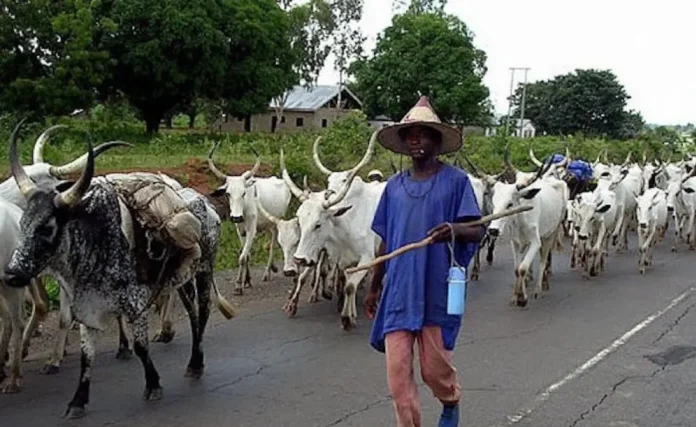The Federal Government has identified open grazing as a major driver of Nigeria’s long-standing farmer–herder clashes and has rolled out a nationwide plan to convert 417 grazing reserves into modern livestock hubs.
Minister of Livestock Development, Idi Mukhtar Maiha, announced this on Monday during the inaugural meeting of the National Council on Livestock Development held at the Government House Banquet Hall in Yola, Adamawa State.
He described the event as a significant turning point for the country’s livestock sector, emphasizing that the new approach is built to modernize production, expand economic opportunities, and support sustainable peace.
Maiha stressed the urgent need for Nigeria to transition from open grazing to ranching, calling open grazing “unsustainable” and “a major source of conflict.”
He noted that transforming all 417 reserves into Renewed Hope Livestock Villages is central to resolving the challenges facing the sector.
According to him, each reserve will function as an economic cluster equipped with improved pastures, veterinary services, water systems, schools, clinics, renewable energy, and facilities for dairy and beef processing.
The minister added that state governments will be expected to provide land for pastoralists willing to adopt ranching practices.
He emphasized that ranching offers producers greater stability, security, and improved productivity.
Maiha also outlined the key achievements of the one-year-old Ministry of Livestock Development, anchored on the National Livestock Growth Acceleration Strategy.
The strategy seeks to grow the livestock sector from $32 billion to $74 billion within five years by boosting genetic improvement, increasing productivity, and scaling investments across the value chain.
He highlighted achievements such as registering eight new pasture species, developing a national genetic resources plan, and expanding vaccine production capacity at NVRI Vom from 120 million to 850 million doses yearly.
Maiha also cited the Wase Livestock Village as a model for grazing reserve transformation and noted new partnerships with global dairy giants including Nestlé, Arla, Danone, Promasidor, and FrieslandCampina WAMCO.
These initiatives are projected to help double Nigeria’s annual milk output from 700,000 metric tons to 1.4 million. Under the L-PRES project, additional infrastructure—including milk collection centres, solar-powered boreholes, veterinary clinics, slaughter slabs, and cattle dips—has been set up across multiple states.
He urged states to align with the national strategy, warning that fragmented approaches would slow progress. He stressed that the challenges confronting the sector do not stop at state boundaries and require cohesive national action.
Chairman of the House Committee on Livestock Development, Tasir Olawale Raji, pledged legislative backing for ongoing reforms aimed at repositioning the sector.
He warned that Nigeria’s production gap is still troubling, noting that the country imports 65 percent of the milk it consumes. He added that per capita consumption of milk, meat, and eggs remains well below global averages and revealed that the National Assembly is drafting new laws to modernize livestock systems and draw private investment.
Raji urged participants to present practical recommendations capable of unlocking the sector’s economic potential and expressed confidence that the council would accelerate the goals of the Renewed Hope Agenda.
Permanent Secretary of the ministry, Chinyere Ijeoma Akujobi, said the meeting represents a defining moment in Nigeria’s livestock transformation journey.
She noted that the newly inaugurated council will act as the country’s top policy and coordination body for the livestock sector. She acknowledged the support of development partners—especially Propcom—and called for decisions that would expand wealth creation, improve livelihoods, and build a more resilient livestock economy.
The National Council on Livestock Development will meet each year to assess progress, harmonize policies, and guide the implementation of Nigeria’s long-term livestock development blueprint.

